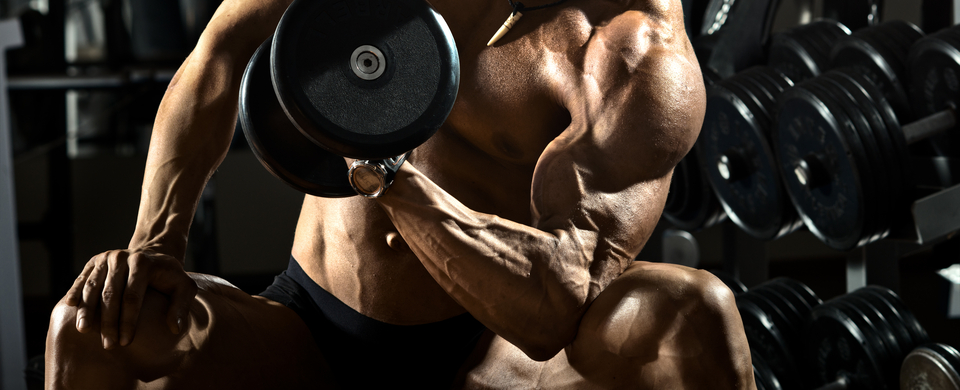If Over The Line achieves nothing else, I hope it contributes to a better understanding of what doctors’ call ‘reverse anorexia’ and encourages efforts to provide the counselling and support teenage boys need to overcome it.
The book is intended to be an entertaining work of fiction, but the character whose death sets up the plot, Matt Davies, has suffered in his teens from reverse anorexia leading to use of anabolic steroids and a cycle of alcohol and drug addiction.
Body-building is now hugely popular among teenage boys. Many of them use gyms for weight training for good reasons: they want to be healthy or they need to be stronger for sports they take part in. But, generally, qualified coaches advise against anyone who is not fully grown using weights because of its impact on their undeveloped bones.
Why then are so many teenage boys getting into body building when it is not encouraged by most sports professionals? And why do some of them use anabolic steroids to artificially aid muscle development, despite the severe health risks?
The paradox is that boys who display a high degree of confidence – possibly even arrogance – are often, in fact, suffering from low self-esteem.
In Over The Line, Matt is infatuated with childhood friend, Megan Tomos, the central character, but he isn’t sporty and sees her slipping away from him as she achieves more and more success as an athlete. To compete with Will Driscoll, a talented rugby player, for Megan’s affection he starts body-building and becomes addicted to anabolic steroids.
The term ‘reverse anorexia’ has been around for at least 20 years but it is not widely used or understood. Health professionals define it as a syndrome where people believe “that they (appear) small and weak even though they (are) actually large and muscular.” (Pope, Katz and Hudson, 1993)
As one academic put it: “To compensate for his insecurities, the bodybuilder escalates his weightlifting regime so he can appear more intimidating in a sort of vicious cycle. Likewise, the female with anorexia nervosa starves herself to become life-threateningly thin, but can never be thin enough for herself.” (Bianca Hitt, Vanderbilt University, Tennessee)
Whatever motivates teenage boys to start body-building – girl troubles, bullying, problems at home, pressure to look like Action Man – the temptation to speed up the process of developing muscle bulk by taking anabolic steroids is immense.
Steroids are readily available in many gyms and online, yet the consequences of using them can be deadly. Steroid abuse can lead to high blood pressure, heart attacks, strokes and liver or kidney tumours.
In men, the physical effects also include reduced sperm count, infertility, shrunken testicles, baldness, breast development, increased risk of prostate cancer and a combination of splayed teeth and overgrowth of the forehead (giving an ‘incredible hulk’ appearance).
In women, anabolic steroids can cause facial hair growth and body hair, loss of breasts, swelling of the clitoris, a deepened voice, an increased sex drive, problems with periods and hair loss.
Misusing anabolic steroids can, in either sex, cause severe acne, mood swings, hallucinations and delusions, and aggressive behaviour (known as ‘roid rage).
The Government and its Advisory Council of the Misuse of Drugs admit they don’t know the full extent of steroid abuse in Britain.
We do know police and border force seizures of anabolic steroids in England and Wales increased by 35%, from 848 in 2012/13 to 1,142 in 2013/14, and the quantity of anabolic steroids seized increased by 70%, from 1.5 million doses in 2012/13 to 2.5 million doses in 2013/14.
But these figures, while showing the problem is growing, are likely to underestimate its extent because steroids are a Class C drug and given a lower priority by law enforcement agencies than cocaine and heroin (Class A) or even cannabis (Class B).
Data from drug charities reinforces the cause for concern. Crime Reduction Initiatives [CRI], for example, said recently it had seen a rise of 645 per cent in steroid users visiting its 21 needle exchanges across the UK, up from just 290 in 2010 to 2,161 in 2013.
To combat the spread of blood-borne infections such as hepatitis B and HIV among teenage steroid users, the National Institute for Health and Care Excellence [NICE] announced in April 2014 that health providers should offer specialist services for “rapidly increasing numbers” and for the first time advised that needles should be provided to under 18s.
It might be an exaggeration to say steroid abuse is reaching epidemic proportions but we are not far from that. It is certainly a very serious and growing problem.
Most people think of steroid abuse as only an issue for elite sport. The media focus has almost exclusively been on high-profile cases such as the Lance Armstrong and BALCO scandals.
But steroids are being manufactured and supplied on an industrial scale for illegal and harmful use in our communities. Huge profits are being made by people – criminals – exploiting the low self-esteem of young teenagers.
It’s time to do something about it.

